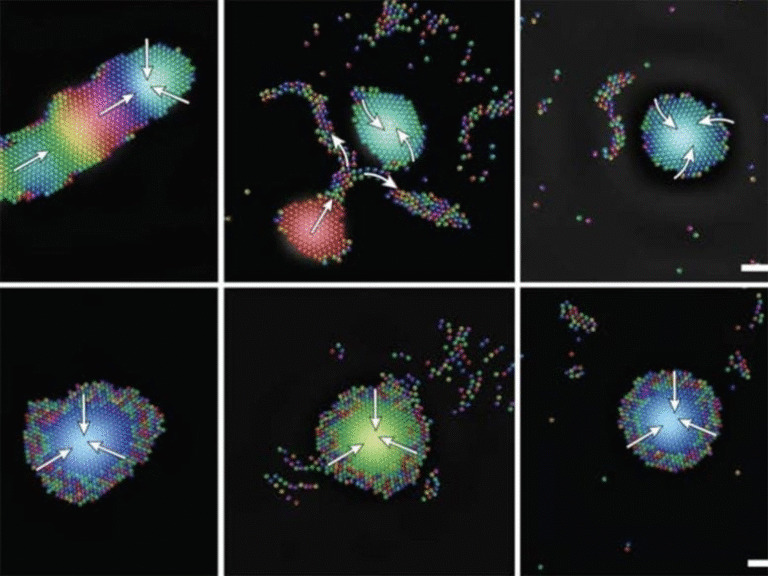Flash-Freezing Breakthrough Offers Clearer Insights Into Lithium Metal Battery Performance

Researchers at Stanford University have introduced a fresh twist to a long-standing scientific tool, and this upgrade could reshape how scientists study batteries and many other sensitive materials. Their new method—called cryo-XPS—helps scientists observe delicate chemical layers inside lithium metal batteries without disturbing them, something that has been surprisingly difficult until now.
Lithium metal batteries are often seen as the next big step after today’s lithium-ion batteries. They use metallic lithium instead of graphite for the anode, which gives them the potential for much higher energy density and extremely fast charging. The catch? They tend to short-circuit and fail after only a handful of recharges. A major reason is a thin protective layer that forms on the lithium metal surface. This layer is essential, but until now, scientists haven’t been able to study it in its natural state. Every time they tried, the observing tool itself altered the material.
The Stanford team has tackled this problem by modifying a widely used technique called X-ray photoelectron spectroscopy (XPS). Standard XPS shoots an X-ray beam at a material to reveal details about its chemical makeup, but for lithium metal batteries, this process changes the protective layer during measurement. At room temperature and under the ultra-high vacuum needed for XPS, parts of the layer literally disappear or react.
To prevent that, the researchers froze freshly cycled lithium metal anodes almost instantly at around –325°F (–200°C). Then, instead of analyzing the sample at room temperature, they kept it at a still-freezing –165°F, which was warm enough for the XPS equipment to function but cold enough to preserve the delicate layer. This allowed them to observe the surface in a truly pristine state.
Their results show huge differences between conventional XPS and cryo-XPS readings. For example, the protective layer—also called the solid electrolyte interphase (SEI)—appeared much thinner under normal XPS because parts of it evaporated or reacted during observation. The chemical composition also looked very different. Standard XPS showed unnaturally high amounts of lithium fluoride, a compound long believed to improve battery lifespan. Cryo-XPS revealed that these readings were overstated. In contrast, lithium oxide—a compound linked to stable, high-performing batteries—appeared in much greater amounts under cryo-XPS but barely showed up in room-temperature scans.
This suggests that some previous assumptions about what makes a “good” SEI may need to be revisited. The research warns that standard XPS might have pushed battery design toward the wrong priorities because it distorted the chemical picture.
The team also tested several battery electrolyte formulas and compared their performance with the SEI chemistry seen under each measurement method. Cryo-XPS showed a strong correlation between certain salt-based components in the SEI and better charge retention. Conventional XPS showed only a weak correlation, further proving how much standard measurements can mislead.
This new method doesn’t just apply to lithium metal batteries. Many scientific fields rely on XPS, from catalysis research to corrosion studies to semiconductor development. Any time a material is sensitive to heat, vacuum, or X-rays, cryo-XPS could provide a more accurate window into what’s really happening at its surface.
The technology behind cryo-XPS is relatively simple in concept but powerful in impact. The process starts with flash-freezing the sample immediately after a battery is cycled, using temperatures close to liquid nitrogen levels. The frozen sample is then transferred into the XPS chamber using a special holder that keeps it cold. Once inside, the instrument examines the surface while preventing chemical reactions that normally occur during X-ray exposure.
Even though cryo-XPS requires special equipment and careful handling, its potential benefits are enormous. For lithium metal batteries, being able to accurately identify what compounds form on the anode surface could help engineers design new electrolytes, better coatings, and safer interfaces that prevent short circuits and extend battery life. Instead of guessing based on distorted measurements, researchers can now work from a reliable chemical snapshot.
This new clarity comes at a crucial time. Lithium metal batteries are a major focus of next-generation energy storage research. Their high energy density makes them attractive for electric vehicles, wearables, drones, and even grid backup systems. But their instability has kept them out of widespread commercial use. Improving the SEI is one of the biggest hurdles, and understanding it properly is the first step toward overcoming that challenge.
To appreciate why this breakthrough matters, it helps to understand what the SEI actually is. When a lithium metal battery is first charged, the electrolyte reacts with the metallic lithium, creating a very thin film—often only a billionth of a meter thick. This layer allows lithium ions to pass through but stops electrons from escaping, which prevents continued unwanted reactions. A stable SEI is essential for preventing dangerous growths called dendrites, which can pierce the battery and cause short circuits.
However, the SEI is incredibly fragile, and its exact structure depends heavily on the electrolyte chemistry. That’s why misreading its chemical content due to the limitations of standard XPS has been such a big problem for battery science. If a measurement tool misrepresents how much of a compound like lithium fluoride is present, battery developers may end up optimizing the wrong ingredient for better performance. Cryo-XPS provides clarity by allowing the SEI to be studied without the interference caused by heat or vacuum conditions.
Outside the specific details of the study, this work has broader implications for how we approach materials science. Tools that unintentionally change their samples can lead to decades of confusion or incorrect theories. Scientists refer to this as the observer effect, and it appears even at everyday levels—you might notice it when checking tire pressure and losing some air from the valve. Cryo-XPS is a clever workaround that reduces the observer effect for materials that react easily under normal analysis conditions.
While this method will not instantly solve all the challenges facing lithium metal batteries, it does open the door to more accurate research. With better measurements, scientists can better target the design of electrolytes that naturally form stable, long-lasting SEIs. Some research groups may also explore whether ultrathin artificial coatings can protect lithium metal surfaces even further, now that they have better insight into how those coatings behave.
It’s also worth noting that cryo-techniques are not new in other fields. In structural biology, for example, cryo-electron microscopy revolutionized the ability to visualize proteins without damaging them. Cryo-XPS is another example of how lowering the temperature can unlock hidden details in complex systems.
The work was led by researchers Stacey Bent and Yi Cui, both well-known figures in materials science and energy research. Their study emphasizes that scientists should critically evaluate whether their tools truly show reality—or whether the tools might be shaping what they see. This insight could help redirect battery research efforts that were built on incomplete or misleading data.
The findings appear in Nature, published in October 2025, under the title Cryogenic X-ray photoelectron spectroscopy for battery interfaces. For anyone interested in the future of energy storage, this method offers a fresh and much-needed lens through which to understand the chemistry that could define the next generation of batteries.
Research Paper:
https://www.nature.com/articles/s41586-025-09618-3





